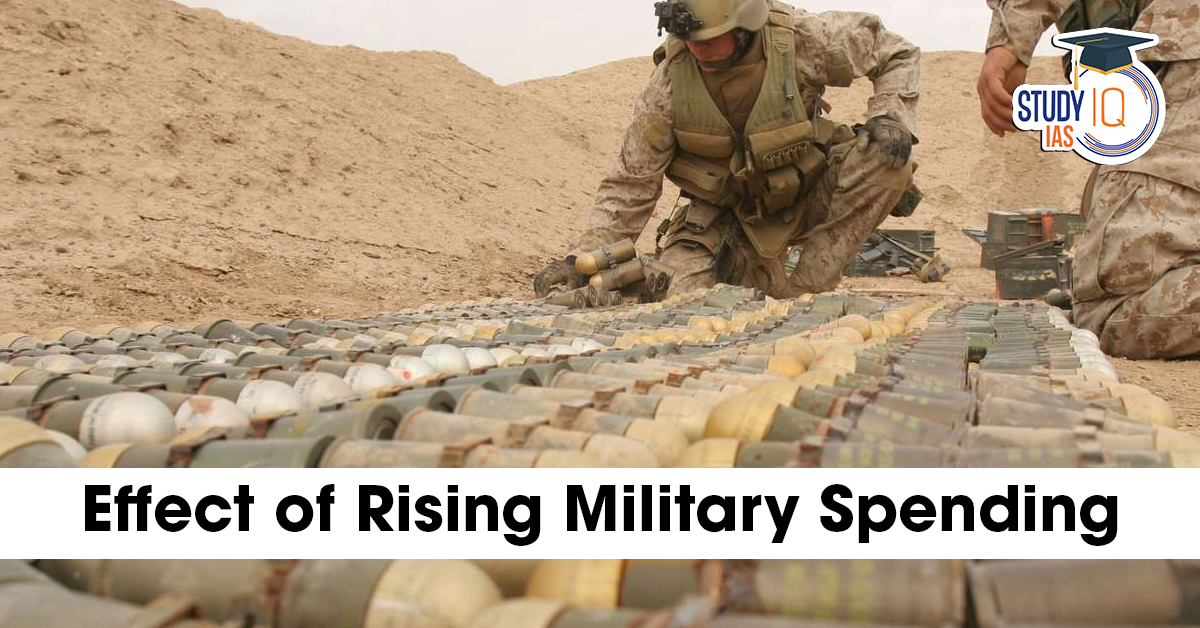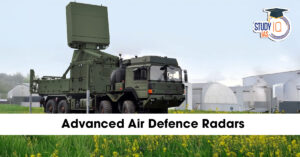Table of Contents
Context: The North Atlantic Treaty Organization (NATO) summit in June pledged to increase military spending to 5% of the member nations’ GDP (specifically “core defence requirements as well as defence and security-related spending by 2035”).
Historical Trajectory of Military Expenditures
Cold War Era (1947-1991):
- Military spending peaked, reaching 1% of global GDP in 1960.
- Driven by arms race between the US and USSR.
- In the final Cold War year (1991), military spending was 3% of global GDP.
Post-Cold War Decline (1991–1998):
- Significant reduction in global tensions led to a steady fall in spending.
- Lowest point in 1998: 2.1% of global GDP, around $1,100 billion.
Gradual Increase (2000s-2010s):
- Resurgence due to regional conflicts, terrorism, and new security challenges.
- By 2015, it was 2.3% of global GDP.
Recent Surge (2020s):
- Major conflicts (Russia-Ukraine, Israel-Gaza, India-Pakistan, Israel-Iran) triggered rapid increases.
- 2024: 2.5% of GDP ($2,718 billion), up 9.4% in one year—the sharpest rise since 1988.
| Top 5 Military Spending Countries (2024) |
Biggest Spenders as Share of GDP (excluding active war zones)
|
Effects of Increased Military Spending
- Crowding Out of Social & Developmental Expenditure: Diverts resources from health, education, poverty reduction, and climate mitigation.
- UN’s annual budget ($44 billion) is dwarfed by military spending ($2.7 trillion).
- Setback to UN and Global Peace Initiatives: Cuts in foreign aid (e.g., closure of USAID) weaken development, humanitarian, and peacekeeping programs.
- Undermining Progress on Sustainable Development Goals (SDGs): Reduced funds slow efforts to end poverty, improve health services, and achieve universal healthcare.
- Example: USAID’s withdrawal may result in 14 million additional deaths by 2030.
- Impact on Climate Change: Increased defence activity raises greenhouse gas emissions (e.g., a 3.5% NATO GDP target = 200 million extra tonnes annually).
- Funds diverted from climate mitigation, despite rising climate emergencies.
- Resource Misallocation: Scarce public funds are allocated to weapons and military rather than addressing basic needs and public welfare.
- In 12 days, the U.S. spent $1 billion on missile interceptors (comparable to one-sixth of the UN’s half-year receipts).
- Global Inequality: Military spending is concentrated in a few countries, exacerbating inequalities in global security and development.
- Threat to Long-Term Human Well-being: Peace is not just the absence of war, but requires investment in life-sustaining conditions; increased military budgets undermine this holistic peace.
How is India Affected by Increased Military Spending?
- Budgetary Trade-offs: Higher defence allocations reduce fiscal space for essential sectors like health, education, and welfare.
- Example: In 2023-24, India allocated ₹6.81 lakh crore to defence, while Ayushman Bharat health insurance received only ₹7,200 crore.
- Low Public Health Spending: Despite rising defence spending (2.3% of GDP), public health spending remains low (1.84% of GDP), far below both the national target (2.5%) and developed country averages (~10%).
- Strain from Emergency Expenditure: Operations like “Operation Sindoor” led to emergency allocations (₹50,000 crore), straining the overall budget further.


 Advanced Air Defence Radars: Types, Comp...
Advanced Air Defence Radars: Types, Comp...
 Ion Chromatography, Working and Applicat...
Ion Chromatography, Working and Applicat...
 Broadly Neutralising Antibodies (bNAbs):...
Broadly Neutralising Antibodies (bNAbs):...

























